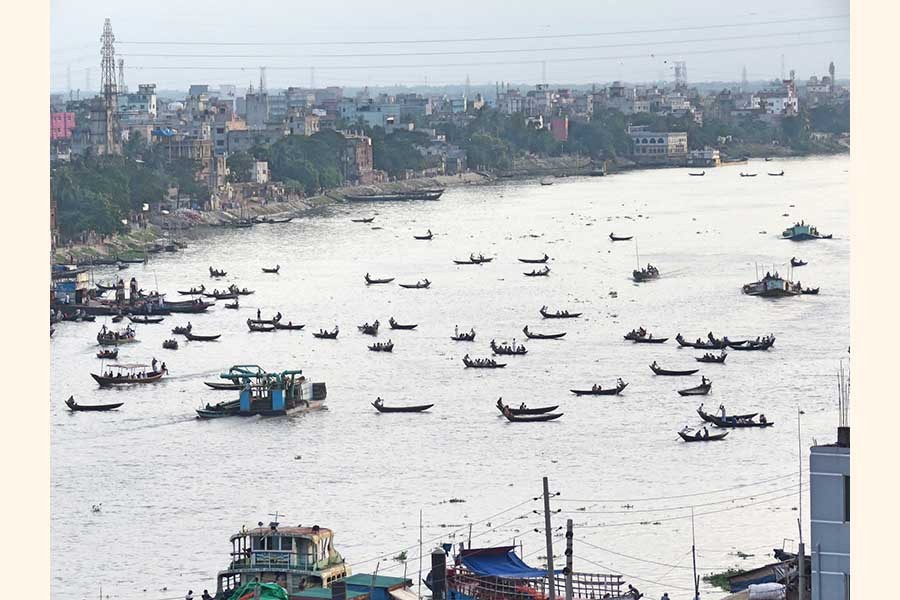The good news is that the water quality of the much abused Buriganga River has improved to some extent but the bad news is that the sources of pollution are still quite active. Tests conducted by the Department of Environment (DoE) last month have found the average dissolve oxygen (DO) at 2.3 mg per litre (mg/L) in the Buriganga's water at Sadarghat point against 0.00 mg/L in January last year. Notably, Sadarghat point of the river is one of the highly polluted ones, if not the most polluted point. By any reckoning, the improvement is substantial in just 10 months, more particularly if considered the relocation time of tanneries from Hazaribagh within the past six months. Then not all the tanneries have been shifted to Savar; reportedly 100 of them are still operating from their old locations illegally. Yet the picture of improved water quality will be clear not before January or February next when the flow of water in the river becomes lean.
However, the indication is quite positive. If relocation of 250 tanneries has been responsible for making this improvement happen, there is reason to be optimistic about the revival of water quality of not only the Buriganga but also of other rivers girdling the capital city. First, action must be taken against tanneries still operating from their old sites. Either those will relocate or be closed down. The next challenge is to plug other major sources of pollution of the river. Experts have identified the dyeing factories located at Shyampur to be the next great polluters. These factories release concentrated dyes, chemicals and heavy metals into the Buriganga without treatment. Most such factories and other industrial units on the bank of the river have no effluent treatment plant and those having the facilities do not use theirs because of laxity in enforcement of the legal provisions.
Apart from dyeing and other factories, the Water and Sewerage Authority (WASA), the city corporations and the general public, inhabitants included, are contributing to the pollution of the rivers all around. The indication is that the government and semi-government agencies could not care less when it comes to preserving the environment. Allowing the rivers - a precious gift of Nature and lifelines of Dhaka city - around the city to be encroached upon and polluted so heavily is a crime. Survival of a river like the Buriganga is threatened because of large-scale encroachment. Further pollution will only leave the city uninhabitable.
In a situation like this, the relocation of tanneries has been a major development but unless it is followed by further remedial measures, the Buriganga and other rivers around the city will still be threatened with degeneration - and even extinction. That the authorities have not learnt a lesson from the past mistake is clear by the fact that they have shifted the tannery pollution from the Buriganga to the Dhaleswari. The Central Effluent Treatment Plant (CETP) remains largely non-functional. Untreated effluent is polluting the water of the Dhaleswari. Not many of the high-ups are found to be concerned about it. Such unhealthy environmental development calls for clinical surgery like malignant growth in human bodies does. So the options are clear: all industries releasing solid waste or effluent into river waters must do so after proper treatment or be compelled to pull down their shutters.


